- Choosing the Right Rhubarb Seeds for Your Garden
- 1. Climate Adaptability
- 2. Flavor and Texture
- 3. Productivity
- 4. Disease Resistance
- 5. Growing Season
- Preparing the Soil for Rhubarb Seeds
- Step 1: Choose a Suitable Location
- Step 2: Clear the Area
- Step 3: Amend the Soil
- Step 4: Improve Drainage
- Step 5: Fertilize
- Step 6: Water the Soil
- Step 7: Mark the Planting Area
- Sowing Rhubarb Seeds: Step-by-Step Guide
- 1. Gather Your Supplies
- 2. Prepare the Seed Trays or Pots
- 3. Sow the Rhubarb Seeds
- 4. Provide Moisture and Cover
- 5. Place in a Warm Location
- 6. Germination and Growth
- 7. Transplanting Seedlings
- 8. Harden Off and Plant Out
- 9. Planting in the Garden
- 10. Care and Maintenance
- Watering and Fertilizing Rhubarb Plants
- Watering
- Fertilizing
- Caring for Rhubarb Seedlings
- 1. Transplanting:
- 2. Soil:
- 3. Sunlight:
- 4. Watering:
- 5. Mulching:
- 6. Fertilizing:
- 7. Support:
- 8. Pest and Disease Control:
- 9. Harvesting:
- Harvesting and Storing Rhubarb
- Common Problems and Solutions for Growing Rhubarb from Seeds
- Poor Germination
- Disease and Pest Infestation
- Thin and Weak Stalks
- Flowering
- “Question-Answer”
- What is rhubarb?
- Can I grow rhubarb from seeds?
- How long does it take to grow rhubarb from seeds?
- What are the ideal conditions for growing rhubarb?
- When is the best time to plant rhubarb seeds?
- How often should I water rhubarb plants?
- Can I harvest rhubarb in the first year?
- “Video” Rhubarb: From Planting To Harvest ❤️
Rhubarb is a versatile and delicious vegetable that can easily be grown in your own vegetable garden. It is a perennial plant that is known for its tart, celery-like stalks, and it is often used in pies, jams, and sauces. While many people opt to grow rhubarb from crowns or divisions, growing it from seeds can be a rewarding and cost-effective alternative. In this guide, we will walk you through the process of growing rhubarb from seeds, from selecting the right seeds to caring for your plants.
Choosing the right seeds is an important first step in growing rhubarb from seeds. Look for reputable seed suppliers or nurseries that offer rhubarbs seeds, and make sure to select a variety that is suitable for your climate. It’s also worth noting that rhubarb is a dioecious plant, meaning that it has separate male and female plants. If you want to grow rhubarb for its edible stalks, make sure to select female varieties, as males do not produce stalks.
Germinating rhubarb seeds can be a bit challenging, as they can have a low germination rate and can take several weeks to sprout. To improve germination, you can soak the seeds in water for 24 hours before planting them. After soaking, plant the seeds in small pots or trays filled with a well-draining potting mix. Keep the soil moist and warm, ideally between 70-80°F (21-27°C), and be patient as it can take up to 4-6 weeks for the seeds to germinate.
Choosing the Right Rhubarb Seeds for Your Garden
When it comes to growing rhubarb from seeds, selecting the right variety is essential. The type of rhubarb seeds you choose will determine the flavor, texture, and productivity of your plants. Here are some factors to consider when choosing rhubarb seeds for your garden:
1. Climate Adaptability
Rhubarb is a cold-tolerant vegetable that prefers cooler climates. However, some varieties are better suited for specific climates. Check the hardiness zone recommendations for each rhubarb seed variety to ensure it will thrive in your area.
2. Flavor and Texture
Rhubarb can have different flavors and textures, ranging from tart and crisp to sweeter and softer. Decide what type of rhubarb you prefer and choose seeds that match your taste preferences.
3. Productivity
Consider the productivity of the rhubarb variety when selecting seeds. Some varieties are known for their high yield, while others may not produce as much. If you plan to use rhubarb for cooking or preserving, a high-yielding variety may be more suitable.
4. Disease Resistance
Rhubarb is susceptible to certain diseases, such as crown rot and leaf spot. Look for varieties that are resistant to common rhubarb diseases to ensure a healthier and more productive garden.
5. Growing Season
Rhubarb has a long growing season, with some varieties being early-season, mid-season, or late-season. Consider the length of your growing season and select seeds that align with your climate and desired harvest time.
By considering these factors, you can choose the right rhubarb seeds for your garden and set yourself up for a successful and flavorful harvest!
Preparing the Soil for Rhubarb Seeds
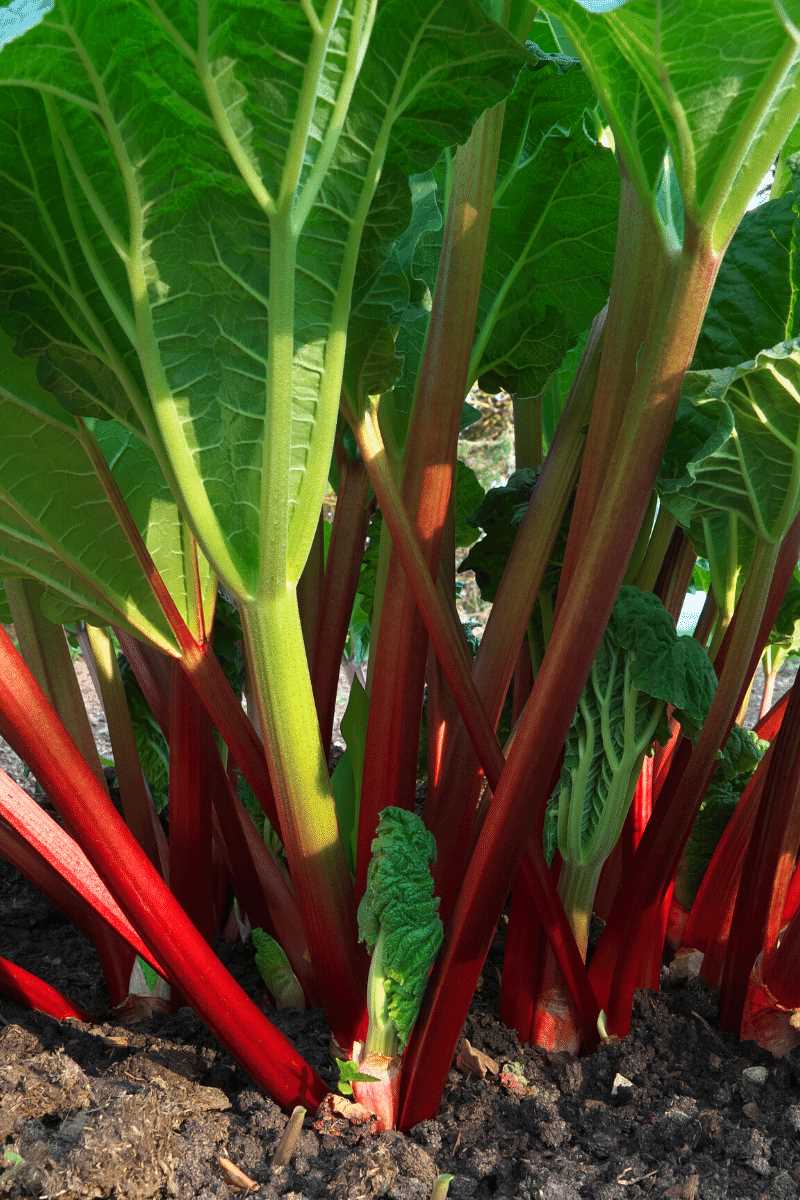
Before planting rhubarb seeds in your vegetable garden, it is important to prepare the soil properly. Rhubarb requires a nutrient-rich soil that is well-draining to promote healthy growth.
Step 1: Choose a Suitable Location
Select a location in your garden that receives full sun for at least 6 hours a day. Rhubarb plants thrive in sunlight and need this energy to produce large, healthy stalks.
Step 2: Clear the Area
Remove any debris, weeds, or grass from the designated area. Use a garden rake or hoe to loosen the top layer of soil.
Step 3: Amend the Soil
Test the quality of your soil using a pH testing kit, which can be purchased from a garden center or online. Rhubarb prefers a slightly acidic soil with a pH between 6.0 and 6.8. If the pH is too high or too low, you can amend the soil accordingly.
If the pH of your soil is too high (alkaline), add some organic matter such as compost, well-rotted manure, or peat moss to increase acidity. Mix it into the top 12 inches of soil.
If the pH of your soil is too low (acidic), you can add some lime to increase the alkalinity. Follow the package instructions for the correct amount to use based on your soil test results.
Step 4: Improve Drainage
Rhubarb plants need well-draining soil to prevent waterlogged roots, which can lead to root rot. If your soil has poor drainage, you can improve it by adding organic matter or sand to the soil.
Spread a layer of organic matter, such as compost or well-rotted manure, over the area and mix it into the top 6-8 inches of soil. This will help improve the soil’s structure and drainage capabilities.
Step 5: Fertilize
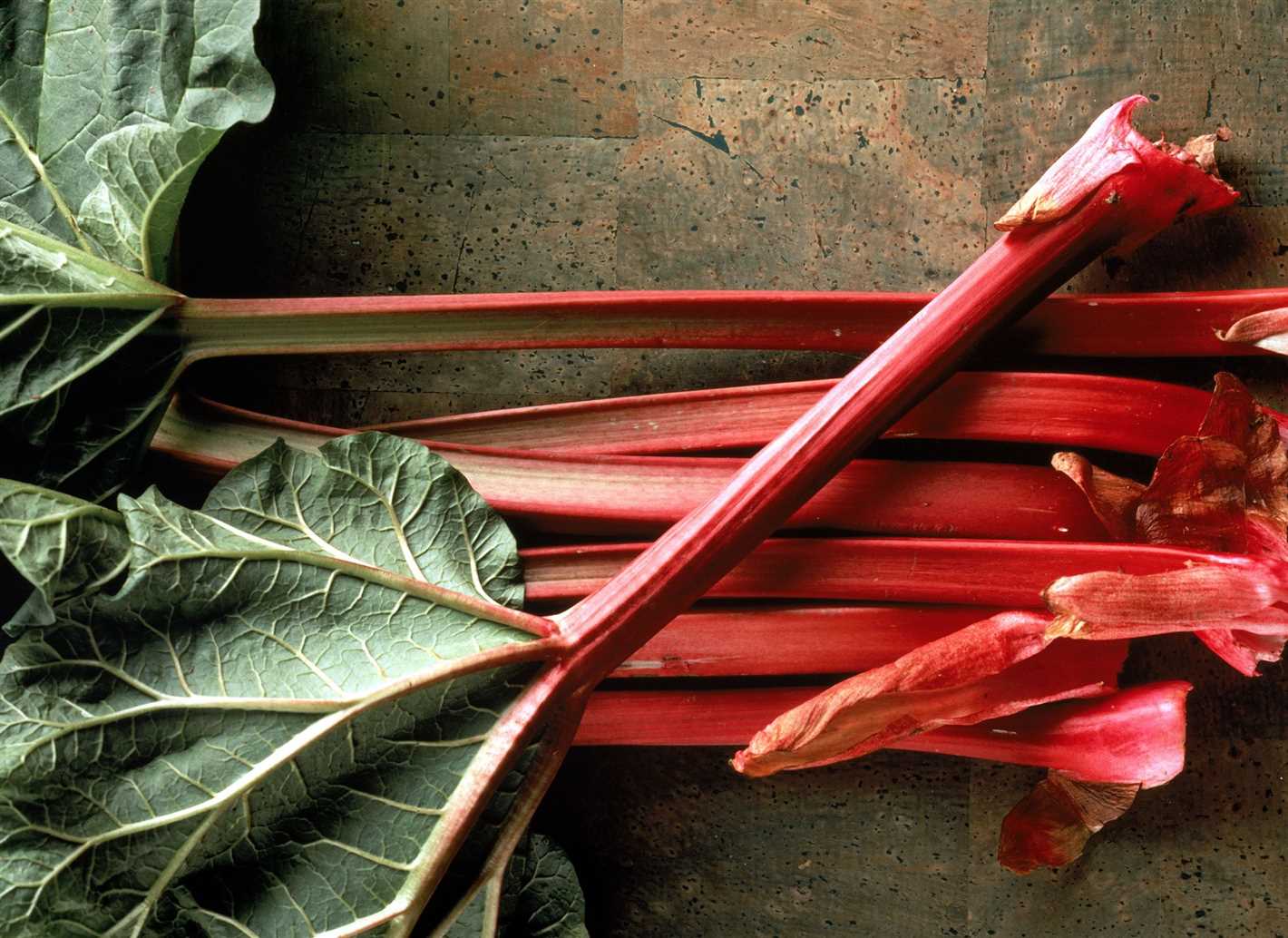
Rhubarb plants are heavy feeders and require regular fertilization to promote healthy growth. Before sowing the seeds, apply a balanced fertilizer, such as a 10-10-10 or 14-14-14, according to the package instructions.
Spread the fertilizer evenly over the planting area and use a garden rake or hoe to work it into the soil. This will provide the necessary nutrients for the seeds to germinate and the young plants to establish.
Step 6: Water the Soil
Before sowing the rhubarb seeds, thoroughly water the prepared soil. This will help settle the soil and provide necessary moisture for seed germination.
Ensure that the soil remains moist, but not waterlogged, throughout the growing season. Regular watering is important to keep the plants hydrated and promote healthy growth.
Step 7: Mark the Planting Area
Use stakes, rocks, or other markers to identify the area where you have prepared the soil for rhubarb seeds. This will help you remember the location and prevent accidental disturbance to the seeds or seedlings.
Follow these steps to properly prepare the soil for rhubarb seeds, and you will be on your way to growing your very own rhubarb plants in your vegetable garden!
Sowing Rhubarb Seeds: Step-by-Step Guide
Starting rhubarb plants from seeds can be a rewarding and cost-effective way to grow this versatile vegetable in your garden. Here is a step-by-step guide on how to sow rhubarb seeds:
1. Gather Your Supplies
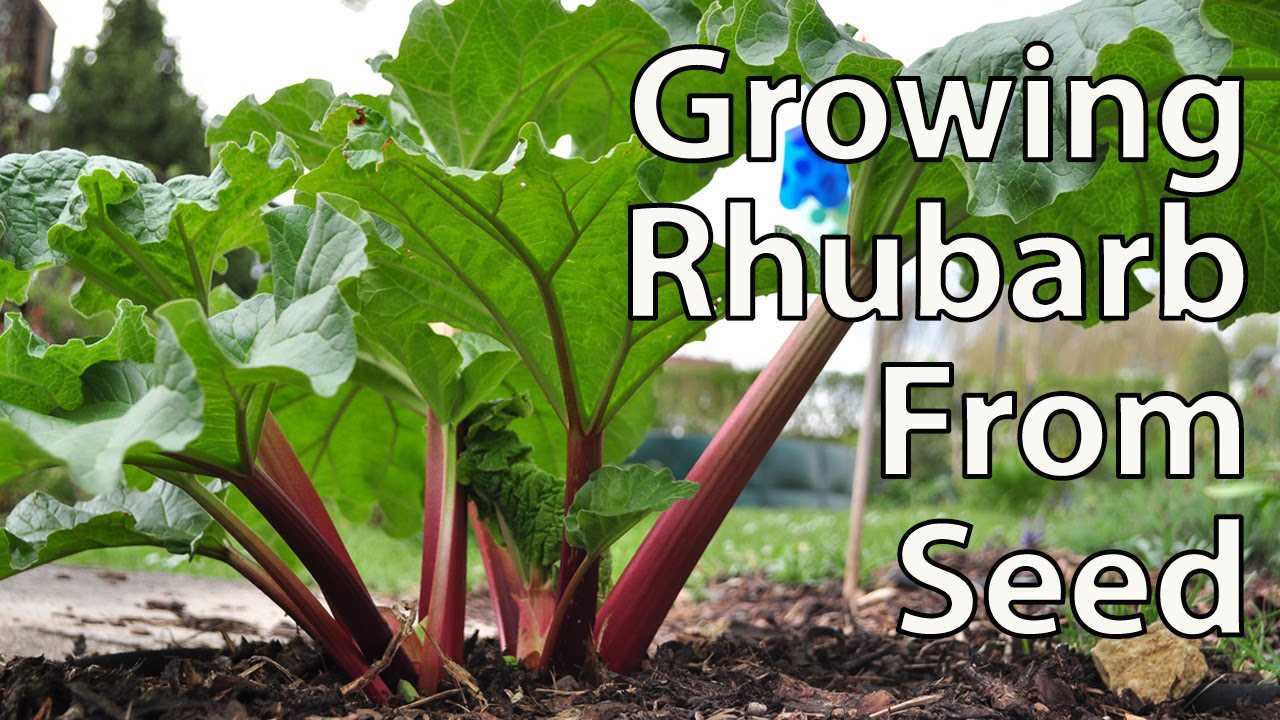
Before you start sowing rhubarb seeds, make sure you have the following supplies:
- Potting soil mix
- Seed trays or small pots
- Rhubarb seeds
- Watering can or spray bottle
- Plastic wrap or a propagator
2. Prepare the Seed Trays or Pots
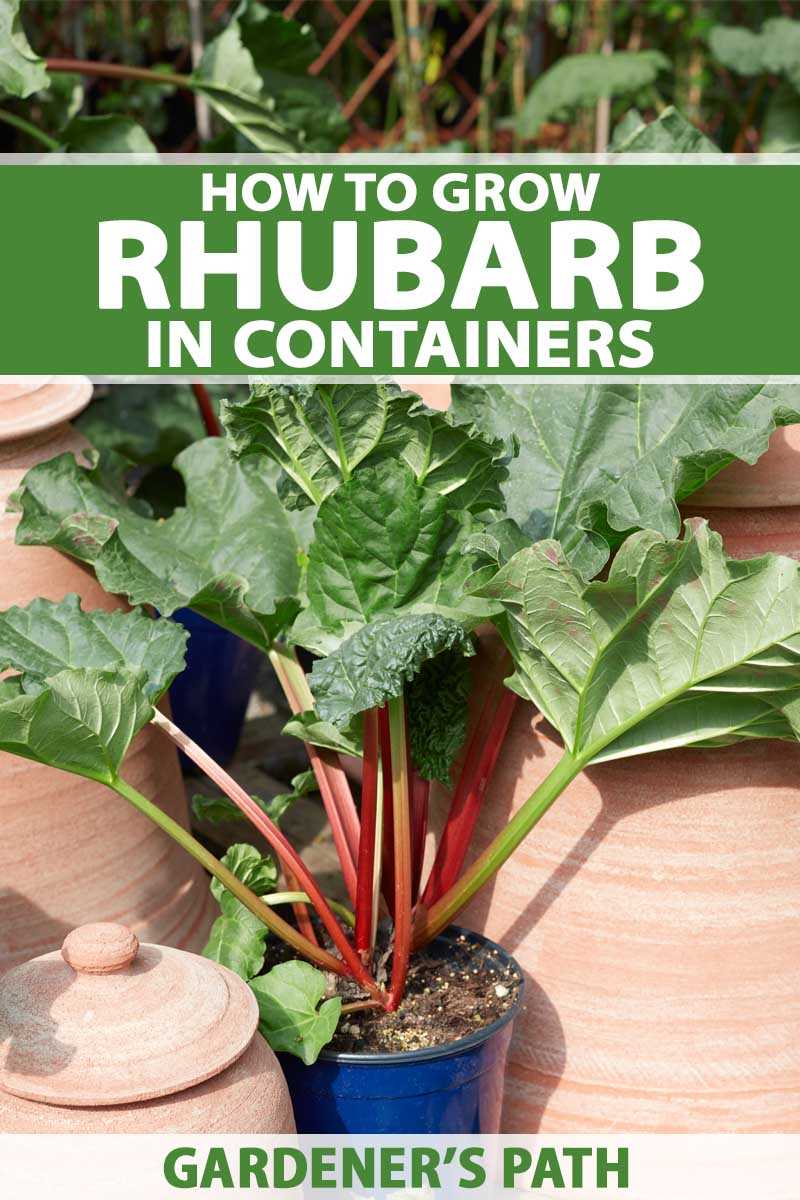
Fill the seed trays or small pots with potting soil mix, leaving about 1 inch of space at the top. Make sure the soil is moist but not soaking wet.
3. Sow the Rhubarb Seeds
Place the rhubarb seeds on top of the soil, spacing them about 1 inch apart. Gently press the seeds into the soil, but do not cover them completely.
4. Provide Moisture and Cover
Water the seeds gently using a watering can or spray bottle, making sure not to dislodge the seeds. Cover the trays or pots with plastic wrap or a propagator to create a humid environment for germination.
5. Place in a Warm Location
Put the trays or pots in a warm location with temperatures around 70-75°F (21-24°C). A windowsill or a greenhouse can be a suitable place for the seeds to germinate.
6. Germination and Growth
Keep an eye on the seeds for germination, which usually takes around 2-3 weeks. Once the seeds have germinated, remove the plastic wrap or propagator and place the trays or pots in an area with bright, indirect light.
7. Transplanting Seedlings
When the seedlings have grown their first true leaves and are large enough to handle, they can be transplanted into individual pots or directly into the garden. Be gentle when handling the seedlings to avoid damaging the delicate roots.
8. Harden Off and Plant Out
Before planting the seedlings in the garden, it’s important to harden them off gradually. Move the plants outdoors to a sheltered location for a few hours each day, gradually increasing the time over a period of 7-10 days. This will acclimatize the seedlings to the outdoor conditions.
9. Planting in the Garden
Choose a sunny or partially shaded spot in your vegetable garden with well-draining soil. Dig a hole large enough to accommodate the roots of the seedling and gently place it in the hole. Backfill with soil and water thoroughly.
10. Care and Maintenance
Keep the soil consistently moist but not waterlogged throughout the growing season. Remove any weeds that compete with the rhubarb plants for nutrients and space.
Follow these steps, and you’ll soon be enjoying a bountiful harvest of homegrown rhubarb!
Watering and Fertilizing Rhubarb Plants
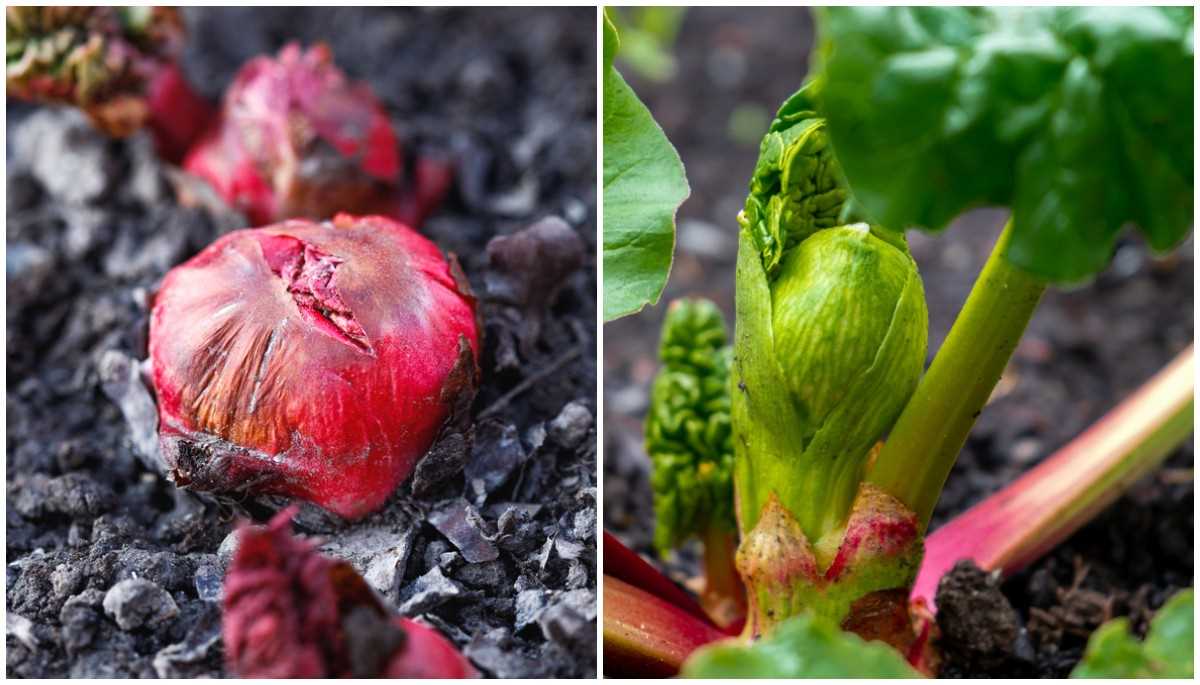
Watering and fertilizing are important for the proper growth and development of rhubarb plants. Here are some guidelines on how to water and fertilize your rhubarb plants:
Watering
Rhubarb plants require consistent moisture, especially during the growing season. Here are some tips for watering your rhubarb plants:
- Water your rhubarb plants deeply and thoroughly, ensuring that the water reaches the roots.
- Water your rhubarb plants in the morning, as this allows the leaves to dry out during the day and reduces the risk of disease.
- Check the soil moisture regularly and adjust your watering schedule accordingly. Rhubarb plants prefer moist, well-draining soil.
- Avoid overwatering, as this can lead to root rot or other problems. Allow the top inch of soil to dry out between waterings.
- Consider mulching around the plants to help retain moisture and suppress weed growth.
Fertilizing
Proper fertilization can improve the growth and yield of rhubarb plants. Here are some tips for fertilizing your rhubarb plants:
- Apply a balanced fertilizer, such as a 10-10-10 or 14-14-14 formulation, in the spring before new growth appears.
- Follow the instructions on the fertilizer packaging for the correct application rate.
- Avoid excessive nitrogen fertilization, as this can lead to lush foliage and reduced stalk production.
- Consider using organic fertilizers, such as compost or well-rotted manure, to provide nutrients to your rhubarb plants.
- Apply fertilizer evenly around the plants and water thoroughly to help the nutrients reach the root zone.
By following these watering and fertilizing guidelines, you can help ensure the healthy growth and productivity of your rhubarb plants.
Caring for Rhubarb Seedlings
Once your rhubarb seeds have germinated and sprouted into seedlings, it’s important to provide them with proper care to ensure their healthy growth. Here are some tips for caring for your rhubarb seedlings:
1. Transplanting:
When the rhubarb seedlings have grown their first true leaves and are around 2 inches tall, they are ready to be transplanted into individual containers or directly into your garden. Transplant them carefully, making sure not to disturb their delicate roots too much.
2. Soil:
Rhubarb seedlings prefer well-draining soil that is rich in organic matter. Prepare the soil by adding compost or well-rotted manure to provide the seedlings with essential nutrients. The pH level of the soil should be around 6.0-7.0.
3. Sunlight:
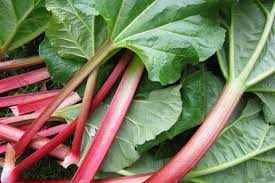
Rhubarb seedlings need plenty of sunlight to grow and thrive. Choose a sunny spot in your garden where they can receive at least 6 hours of direct sunlight each day.
4. Watering:
Keep the soil around the seedlings consistently moist, but avoid overwatering as it can lead to root rot. Water them deeply once or twice a week, depending on the weather conditions.
5. Mulching:
Apply a layer of organic mulch around the base of the rhubarb seedlings to help retain moisture, suppress weed growth, and regulate soil temperature.
6. Fertilizing:
Rhubarb seedlings benefit from regular feeding with a balanced organic fertilizer. Apply the fertilizer according to the manufacturer’s instructions, usually once or twice during the growing season.
7. Support:
As the rhubarb plants grow, they may require support to prevent their heavy leaves from drooping or breaking. Install sturdy stakes or a trellis system to provide support and tie the plants gently if necessary.
8. Pest and Disease Control:
Monitor your rhubarb seedlings regularly for any signs of pests or diseases. Common pests that affect rhubarb include aphids, slugs, and snails. Use organic pest control methods or insecticidal soap if necessary.
9. Harvesting:
It’s important to allow rhubarb seedlings to establish strong root systems before harvesting any stalks. Typically, you should wait until the second year before harvesting rhubarb. During the first year, focus on the plant’s growth and development.
By following these care tips, you can help your rhubarb seedlings thrive and produce a bountiful harvest in the future.
Harvesting and Storing Rhubarb
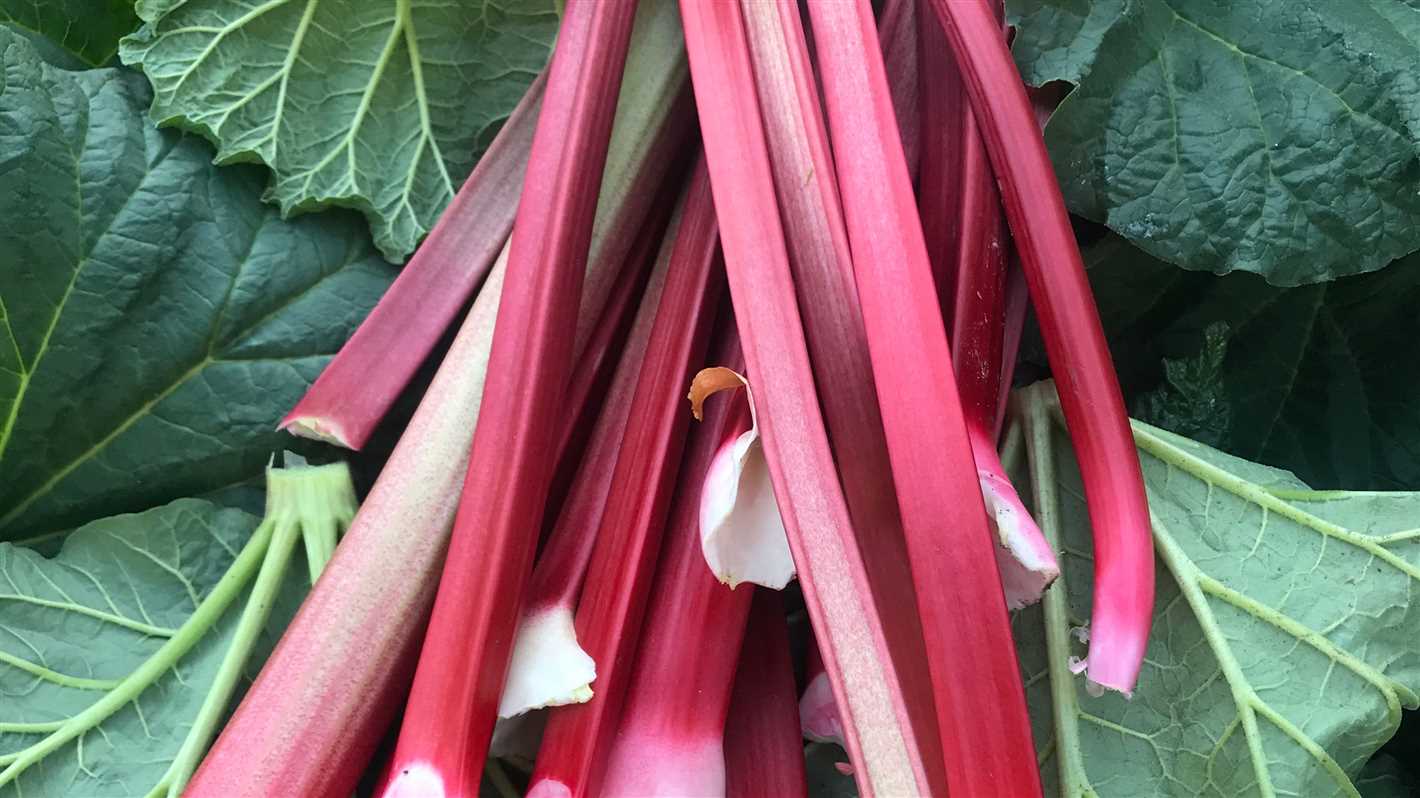
Rhubarb is usually ready to be harvested in the late spring or early summer, depending on your location and climate. Here are some tips on how to properly harvest and store your rhubarb:
- Harvesting:
- Wait until the rhubarb stalks are at least 12 inches long before harvesting.
- To harvest, firmly grasp the stalk near the base and give it a gentle twist while pulling. The stalk should separate easily from the plant.
- Only harvest about one-third of the stalks at a time to ensure the plant remains healthy.
- Remove any leaves from the stalks, as they are toxic and should never be eaten.
- Storing:
- If you plan to use the rhubarb immediately, you can store it in the refrigerator for up to one week.
- If you have harvested more rhubarb than you can use, it can be frozen for later use.
- To freeze rhubarb, wash and chop the stalks into desired pieces.
- Blanch the chopped rhubarb in boiling water for 1-2 minutes, then transfer to an ice bath to cool.
- Once cooled, drain the rhubarb and place it in airtight freezer bags or containers.
- Label the bags or containers with the date and put them in the freezer.
- Frozen rhubarb can be stored for up to one year.
By following these guidelines, you can enjoy your freshly harvested rhubarb for months to come!
Common Problems and Solutions for Growing Rhubarb from Seeds
While growing rhubarb from seeds can be a rewarding experience, it’s not without its challenges. Here are some common problems that you may encounter and their possible solutions:
Poor Germination
One common problem when growing rhubarb from seeds is poor germination. If your seeds are not sprouting, it could be due to several factors:
- Old or low-quality seeds: Ensure that you’re using fresh seeds from a reputable source.
- Inadequate moisture: Rhubarb seeds need consistent moisture to germinate. Keep the soil moist but not waterlogged.
- Low temperatures: Rhubarb seeds prefer warmer temperatures for germination. Ensure that the soil temperature is within the recommended range.
Disease and Pest Infestation
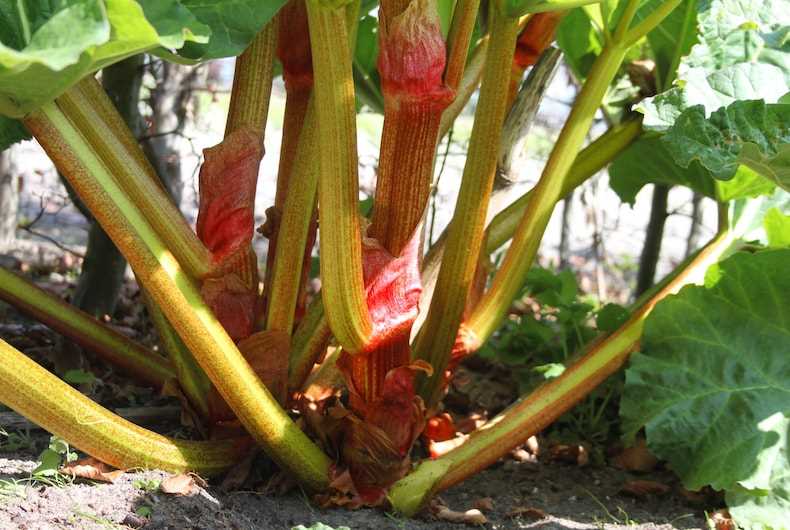
Rhubarb plants can be susceptible to various diseases and pests, including:
- Crown rot: This fungal disease can cause wilting and yellowing of the leaves. To prevent crown rot, ensure proper drainage and avoid overwatering.
- Leaf spot: Leaf spot may manifest as dark, circular lesions on the leaves. Remove and destroy affected leaves to prevent the spread of the disease.
- Aphids: These small insects can suck sap from the leaves, causing stunted growth. Use insecticidal soap or neem oil to control aphids.
- Slugs and snails: These pests can chew on rhubarb leaves, leaving behind large holes. Use organic slug and snail baits or physical barriers to protect your plants.
Thin and Weak Stalks
If your rhubarb plants are producing thin and weak stalks, it could be due to:
- Insufficient sunlight: Rhubarb plants thrive in full sun. Ensure that your plants are receiving at least 6 hours of direct sunlight each day.
- Overcrowding: Rhubarb plants need enough space to grow. Thin out overcrowded plants to promote better stalk growth.
- Nutrient deficiencies: Ensure that your soil is rich in organic matter and provide regular fertilization to address any nutrient deficiencies.
Flowering
Rhubarb is grown for its stalks, not its flowers. If your plants are producing flowers, it can be a sign of stress or maturity:
- Stress: Ensure that your plants are receiving proper care, including adequate water, sunlight, and nutrients.
- Maturity: As rhubarb plants age, they have a tendency to produce flowers. Remove the flowers to redirect energy back to stalk growth.
By addressing these common problems and following proper care practices, you can increase your chances of successfully growing rhubarb from seeds in your vegetable garden.
“Question-Answer”
What is rhubarb?
Rhubarb is a vegetable that is often used in desserts and preserves. It has thick, reddish stalks and a tart flavor.
Can I grow rhubarb from seeds?
Yes, you can grow rhubarb from seeds. However, it is more common to grow rhubarb from crowns or divisions as they establish more quickly.
How long does it take to grow rhubarb from seeds?
It can take about 2-3 years for rhubarb plants to grow from seeds and become established enough to harvest.
What are the ideal conditions for growing rhubarb?
Rhubarb thrives in cool climates and prefers rich, well-drained soil. It also requires full sun or light shade.
When is the best time to plant rhubarb seeds?
The best time to plant rhubarb seeds is in early spring, as soon as the ground can be worked.
How often should I water rhubarb plants?
Rhubarb plants should be watered regularly, especially during dry periods. However, be careful not to overwater as rhubarb can be susceptible to root rot.
Can I harvest rhubarb in the first year?
It is generally recommended to wait until the second year before harvesting rhubarb plants grown from seeds. This allows the plants to establish a strong root system.







